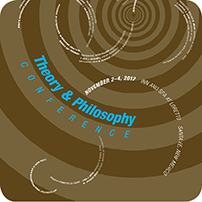Complexity Theories in Behavior Analysis

Jack J. McDowell (Emory University)

Jack J. McDowell received a BA from Yale University in 1972 and a Ph.D. from the State University of New York at Stony Brook in 1979. After completing his clinical internship, he joined the faculty of Emory University, where he currently serves as a professor in the Department of Psychology. Dr. McDowell also is a licensed clinical psychologist and maintains a private practice of behavior therapy in Atlanta, GA. His research has focused on the quantitative analysis of behavior. He has conducted tests of matching theory in experiments with humans, rats, and pigeons; has made formal mathematical contributions to the matching theory literature; and has proposed a computational theory of behavior dynamics. He also has written on the relevance of mathematical and computational accounts of behavior for the treatment of clinical problems. His current research is focused on his computational theory of selection by consequences, including studies of behavior generated by the theory's genetic algorithm and possible implementations of the theory in neural circuitry. His work, including collaborations with students and former students, has been funded by NIMH, NSF, and NIDA.
Abstract: A complexity theory is stated as a set of relatively simple rules that operate repeatedly to generate an output. The output, which typically exhibits properties and features that are not immediately derivable from the rules themselves, is then compared to the natural phenomena the theory purports to explain. At least four instances of complexity theory have appeared in behavior analysis. These are Charles P. Shimp's theory of momentary maximizing, John Donahoe and colleagues' theory of neural networks, A. Charles Catantia's theory of the reflex reserve, and Jack McDowell's theory of behavioral evolution. Each theory generates behavior by means of the rules it implements. If the generated behavior is comparable to the behavior of live organisms, then what is one warranted in asserting about the rules that constitute the theory? For example, is it important that they correspond to events and processes in the natural world? What is the nature of a theory that generates output that is consistent with observation, but that consists of rules that do not correspond, or cannot be determined to correspond, to events in the natural world? Answers to these questions may lead to a more or less maintainable distinction between a model and a theory, and to a profitable discussion of the relative value of these two types of account.